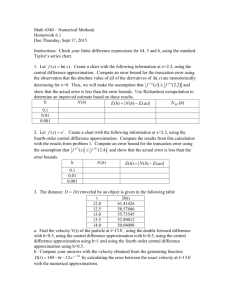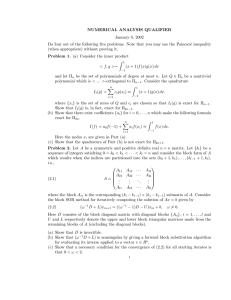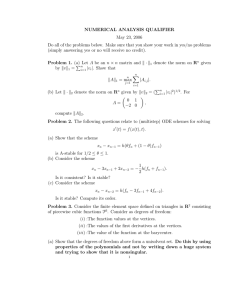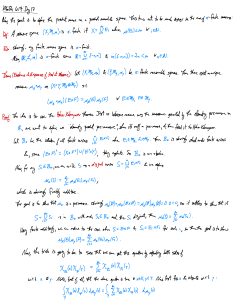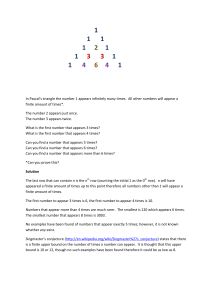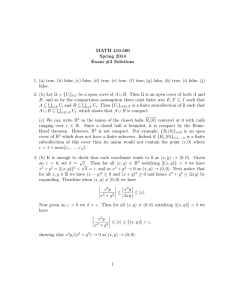Advanced computational methods
advertisement
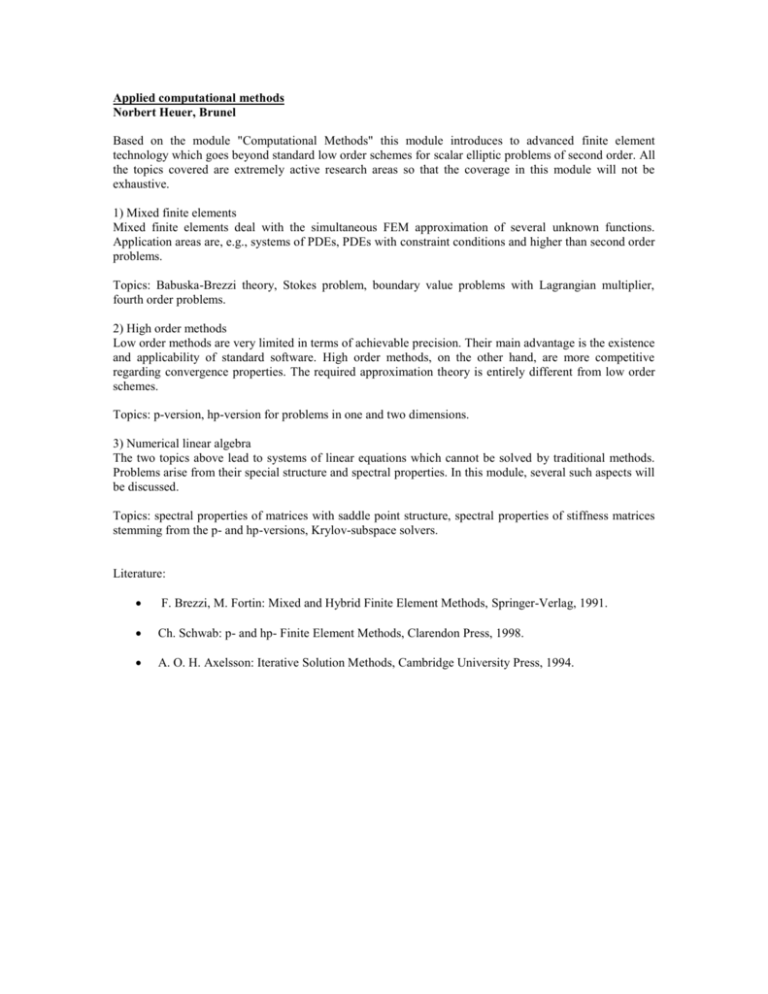
Applied computational methods Norbert Heuer, Brunel Based on the module "Computational Methods" this module introduces to advanced finite element technology which goes beyond standard low order schemes for scalar elliptic problems of second order. All the topics covered are extremely active research areas so that the coverage in this module will not be exhaustive. 1) Mixed finite elements Mixed finite elements deal with the simultaneous FEM approximation of several unknown functions. Application areas are, e.g., systems of PDEs, PDEs with constraint conditions and higher than second order problems. Topics: Babuska-Brezzi theory, Stokes problem, boundary value problems with Lagrangian multiplier, fourth order problems. 2) High order methods Low order methods are very limited in terms of achievable precision. Their main advantage is the existence and applicability of standard software. High order methods, on the other hand, are more competitive regarding convergence properties. The required approximation theory is entirely different from low order schemes. Topics: p-version, hp-version for problems in one and two dimensions. 3) Numerical linear algebra The two topics above lead to systems of linear equations which cannot be solved by traditional methods. Problems arise from their special structure and spectral properties. In this module, several such aspects will be discussed. Topics: spectral properties of matrices with saddle point structure, spectral properties of stiffness matrices stemming from the p- and hp-versions, Krylov-subspace solvers. Literature: F. Brezzi, M. Fortin: Mixed and Hybrid Finite Element Methods, Springer-Verlag, 1991. Ch. Schwab: p- and hp- Finite Element Methods, Clarendon Press, 1998. A. O. H. Axelsson: Iterative Solution Methods, Cambridge University Press, 1994.



